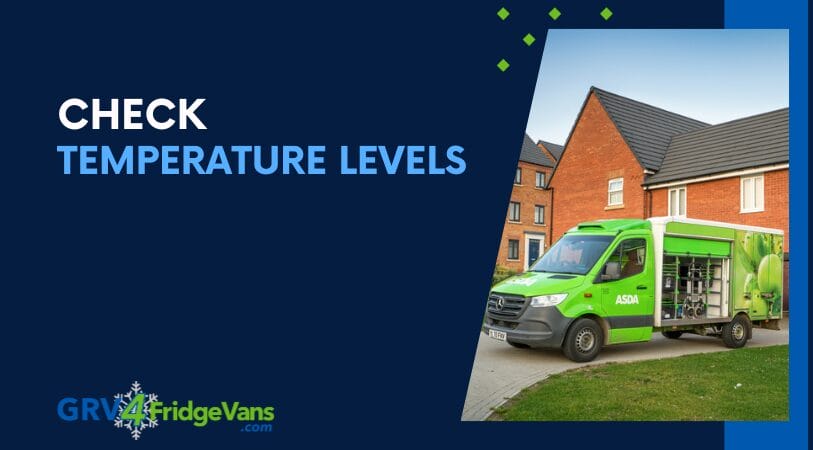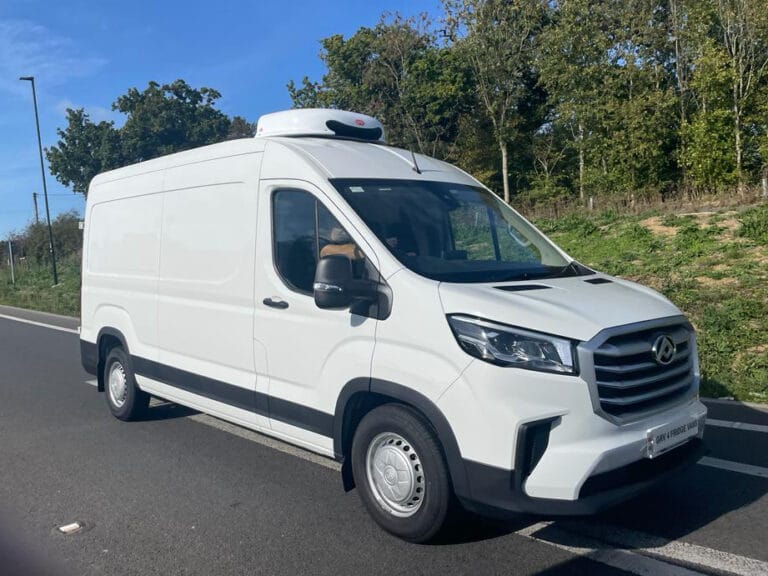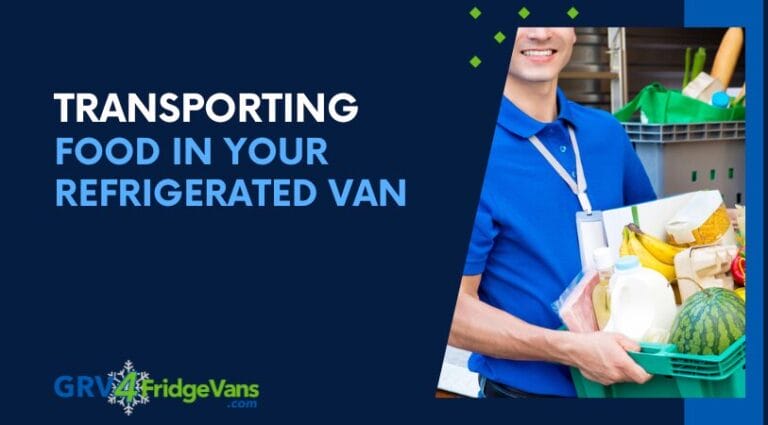Investing in a refrigerated van for your food and beverage business is a huge step that will enable you to expand your reach and grow your business. Without a refrigerated van, you are likely reliant on only travelling short distances and keeping food cool using ice packs and blankets. While this might be effective in the short-term, as your business grows, you will appreciate the flexibility that a refrigerated van offers.
Transporting food in a refrigerated van requires some preparation in order to keep things hygienic and efficient. Establishing clear practices for how you will operate will ensure everyone is on the same page and nothing is overlooked. Company-wide practices need to be established by management to ensure that every employee in the company knows what is expected.
In this guide, we’ll share some of the factors you will need to consider when investing in a refrigerated van to transport food. We’ll also share some common practices that will be helpful to establish from the beginning in order to streamline the process.

Choose the right van
There are many types of refrigerated vans available, so it pays to shop around and find the one that works for your business, rather than making your business adapt to the van. Refrigerated vans are available in all sizes, with variable temperature zones, shelving and other customisable features.
Take your time to consider your current needs and what you would require in order to grow your business. Adopting a growth mindset when making investments in your business will pay off in the long term. It might mean choosing a van that is a little larger than you currently need, but this will simply give your business room to grow.
When choosing a refrigerated van, you’ll also have the option to buy new, buy used, buy an ex-rental or lease your van. A newer van will offer better efficiency and this could pay off in operational savings in the long term. However, this will require a significant investment upfront, and this isn’t always an option.

Converting a van versus buying a custom-made van
If you already have a van for your business, you might be wondering about the option to convert this rather than investing in a purpose-built van. While it might be more cost-effective to convert an existing van in the short-term, this might not be the most efficient solution in the long term.
Insulation is an important part of the refrigerated van, and modern vans will have in-built insulation that enables the van to operate at peak efficiency. Without this insulation, your refrigeration unit will have to work a lot harder to achieve the same goals.
A custom-made van will also offer increased flexibility in terms of the internal layout. You could choose shelving and racking that works well for your business. When converting an existing van, you can expect to lose some of the space to make room for the insulation. As a result, you might not have as much flexibility.
Check local regulations
It’s likely that there are regulatory rules in place that determine the temperature range of food products in transit. These rules are in place to protect consumers and to ensure uniform standards within the food industry.
It’s a good idea to get these printed and laminated and then place them in key areas, such as the back of your van and in other food storage areas. This will ensure everyone can quickly reference the regulations and make sure they are following the rules.

Check temperature levels
Before transporting any food in your van, you need to check that you understand the temperature controls and how to monitor and control fluctuations. The temperature will be different when the van is empty versus when it is fully loaded, so you need to understand how to set the temperature controls to be at the optimum temperature after you have loaded the van.
Factors like weather and the time of day will also have an impact on the temperature inside the van. If you will leave food in the van overnight or for long drives, you need to continually monitor the temperature so it doesn’t spoil the food.
Many refrigerated vans will have digital controls and remote control options. This will enable you to monitor the temperature in your van from anywhere. Alarms will sound if there is a power failure that leads the temperature to drop or increase outside of the tolerated range.
The tolerated range will vary depending on what you are transporting. This is one reason that a flexible van layout with different temperature zones can be so beneficial. You could have a frozen section, a chilled section and an ambient section in order to transport different food items without spoiling them.

Preparing food for transport
Preparation is key when it comes to transporting food in a refrigerated van. You’ll need to invest in insulated trays with covers that will allow you to easily load and unload the food with ease. Colour-coded trays will make it easier to avoid cross contamination of food items and make it easier to store and organise your food items.
Food should be kept in the van for the least amount of time possible and moved as infrequently as possible. This will allow you to keep a consistent temperature and reduce the risk of the food getting spoiled.
Checking the temperature during transit
A probe thermometer can be used to check the temperature of packages during transit. This will help to confirm that your refrigerator is working correctly. Check the temperature periodically, being careful not to piece the packaging.
You can also place temperature probes throughout your van to confirm the temperature range. This is particularly important on very hot days and very cold days. It can help you to avoid wild temperature fluctuations that could ruin your food.

Plan the journey
When your journey is as simple as going from A to B, less preparation is required. However, if your journey involves multiple stops, picking up and dropping off food items along the way, you’ll need to plan carefully.
A manifest for your journey will allow you to keep track of where the food items should be at all times. You can also make a note of the temperature they need to be stored at, so you’ll know if you need to adjust the thermostat at any point in your journey.
If the van will be left overnight, you need to make sure you have enough fuel to keep the refrigeration unit running all night. For electric vehicles, this could mean finding a parking spot with a charging point. You might also consider a backup power source in the event your primary source fails.
Cleaning your van
Proper cleaning protocols will ensure your van is always clean, hygienic and ready for its next trip. You should establish a routine of cleaning the van after every journey, and then carrying out a deep clean periodically.
During the deep clean, you will need to remove all trays from the van and use an antibacterial and antimicrobial cleaning agent to disinfect all surfaces. This step is particularly important if you transport items like raw meat, dairy or fish.

Preparing for breakdowns
No one wants to think about the possibility that their van could break down, but preparing for the worst will help your business to be more resilient in the face of adversity. If your van breaks down, you need a contingency plan in place to protect your produce and continue delivering to your customers.
If you run a catering company and your van breaks down on the way to a wedding, you risk your reputation as a reliable company if you have to call the couple and tell them you can’t make it to their big day.
With a disaster plan in place, you can quickly transfer your products to another van and avoid leaving your customers disappointed. Establish a relationship with a backup hire company so that you know exactly where to turn in the event of a breakdown.
Closing thoughts
A refrigerated van can transform your business and allow you to expand into new markets. With this important piece of business equipment, you can establish your reputation as a reliable and responsible food supplier.
The key to transporting food in your refrigerated van is to establish routines and procedures. These will ensure that everyone in your company is on the same page. Regular temperature monitoring will help to protect your products from extreme cold and extreme heat. If you are planning to leave your van overnight, make sure you have a backup power supply or a reliable power supply such as an electric vehicle charging point.
While refrigerated vans are often reliable, you should have a contingency plan in place in the event of a failure. This will protect your business reputation and help you to avoid additional stress in the event your van refrigeration unit fails or breaks down.




